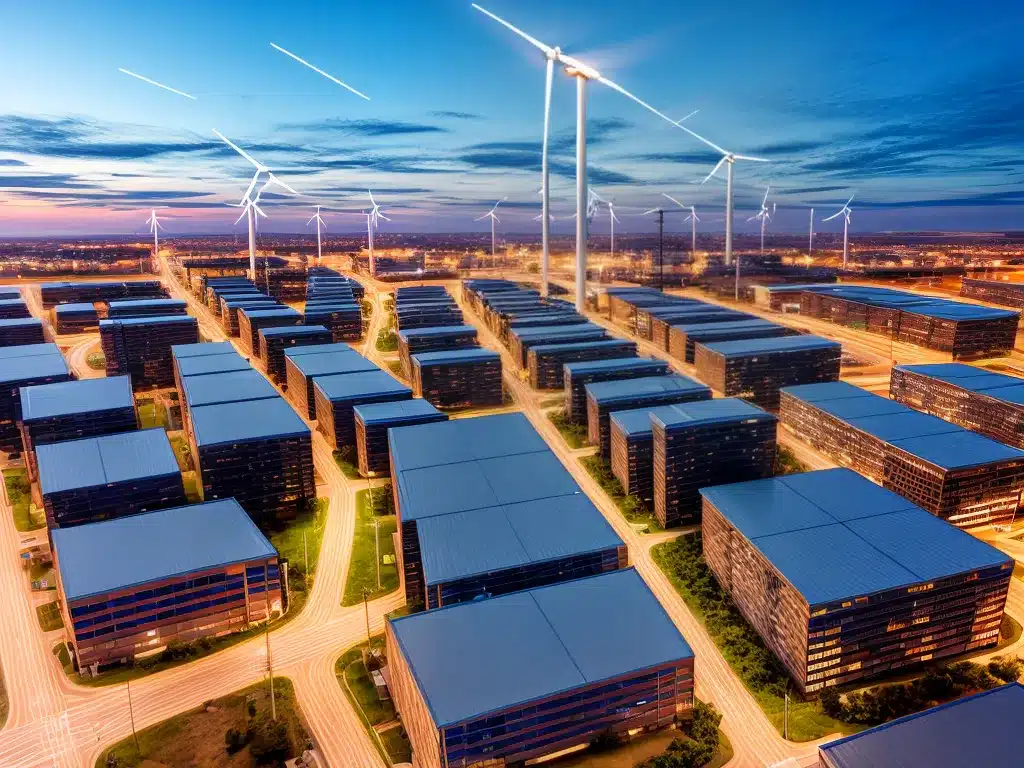
How Utilities Are Using IoT to Build Smart Power Grids
The electric grid is undergoing a major transformation. Utilities are leveraging Internet of Things (IoT) technologies to build smarter, more efficient, and resilient power grids. Here’s an in-depth look at how this digital transformation is unfolding.
Overview of Smart Grids
A smart grid utilizes digital communications technology and information systems to detect and react to local changes in usage. This allows the two-way flow of electricity and information to create a more automated and distributed energy delivery network.
The main goals of building a smart grid include:
-
Improving reliability – Outages can be prevented and restored faster when problems are detected early. Smart sensors can identify faults and re-route power.
-
Enabling greater integration of renewable energy – Smart inverters can help balance the variable nature of solar and wind.
-
Increasing efficiency – Advanced metering and monitoring allows utilities to optimize power distribution. It also enables consumers to modify usage based on price signals.
-
Enhancing security – New cybersecurity measures are implemented to protect against cyber threats. Sensor data can also quickly identify physical attacks.
Key IoT Technologies for Smart Grids
Here are some of the key IoT technologies utilities are deploying to create smart grids:
Smart Meters
-
Smart meters measure and transmit granular energy usage data to the utility. This allows for time-based pricing, outage detection, and better forecasting of demand.
-
Two-way communication enables commands to be sent for activities like connecting/disconnecting service or load shedding.
Sensors
-
Sensors monitor equipment temperature, vibration, pressure, etc. to detect early signs of failure and avoid outages.
-
Weather and fault sensors can also help model and reroute power. Voltage sensors optimize power quality.
Network Communications
-
A reliable network communication system connects all grid components and allows data sharing. This includes fiber, cellular LTE, Wi-Fi mesh networks, etc.
-
Edge computing devices process and analyze data locally before transmitting key information.
Advanced Analytics
-
Analytics applications unlock insights from the vast amount of data. This enables predictive maintenance, outage prediction, and other smart grid capabilities.
-
Machine learning algorithms identify patterns and model complex systems to enhance grid performance.
Benefits of a Smart Grid
Here are some of the major benefits utilities can achieve from implementing smart grid technologies:
-
Reduced outages – Outages can be reduced by as much as 40-70% through early fault detection and isolation. Predictive maintenance also averts equipment failures.
-
Faster outage response – Utilities have detailed visibility into the grid, allowing for precise targeting of impacted areas. Smart meters also enable automatic outage reporting.
-
Increased integration of renewables – Renewables can make up over 30% of power generation through better forecasting, storage, and control capabilities.
-
Improved asset utilization – Sensors and analytics optimize performance and extend the useful life of critical assets like transformers.
-
Enhanced efficiency – Smart grid technologies enable a 5-15% improvement in energy efficiency and load balancing.
-
Informed consumers – Home energy management systems coupled with smart meters allow consumers to actively reduce and shift energy consumption.
-
Reduced costs – McKinsey estimates a smart grid can reduce utility operating costs by 8-12%. Savings come from optimizing field operations and preventing outages.
Challenges in Implementing Smart Grids
Transitioning to a smart grid also involves overcoming some key challenges:
-
Cybersecurity – Expanded digital infrastructure creates new vulnerabilities. Utilities must guard against hackers with defense-in-depth security.
-
Interoperability – Diverse legacy systems and new technologies must seamlessly work together. Common standards are needed.
-
Data management – The massive influx of grid data needs to be securely stored, processed, and analyzed.
-
Power quality – Integrating renewables can impact voltage and power quality unless properly managed.
-
Cost – Smart grid investments have large upfront costs that take years to pay off. New rate structures and financing strategies are required.
-
Organizational change – Utilities need enhanced innovation, collaboration, and analytics capabilities to leverage smart grid data.
Real World Smart Grid Examples
Here are some examples of how utilities worldwide are using IoT to build smarter grids:
-
Austin Energy has deployed 1 million smart meters and sensors to reduce outage time by 40%. Analytics predict equipment failures before they occur.
-
In Italy, the Telegestore project connected 32 million smart meters and sensors via a multi-carrier, multi-technology network. Outages fell by 50%.
-
Singapore’s smart grid initiative uses 1.4 million smart meters plus sensors and software to enable the integration of intermittent solar and wind energy.
-
San Diego Gas & Electric’s microgrid project integrates IoT sensors, EV charging, battery storage, and local solar generation. The microgrid can disconnect from the main grid during disruptions.
-
A Japanese consortium led by Hitachi is using AI and IoT data analytics to optimize voltage control for the efficient integration of solar power on remote islands.
Conclusion
In summary, utilities are aggressively adopting IoT technologies like smart meters, sensors, communications networks, and analytics to transform the traditional power grid into an intelligent, self-healing network. Investments in smart grids lead to substantial benefits like improved reliability, increased renewables integration, enhanced cybersecurity, and lower costs. Although challenges remain, the smart grid evolution is poised to accelerate in the coming decade as utilities leverage IoT to build the grid of the future.












